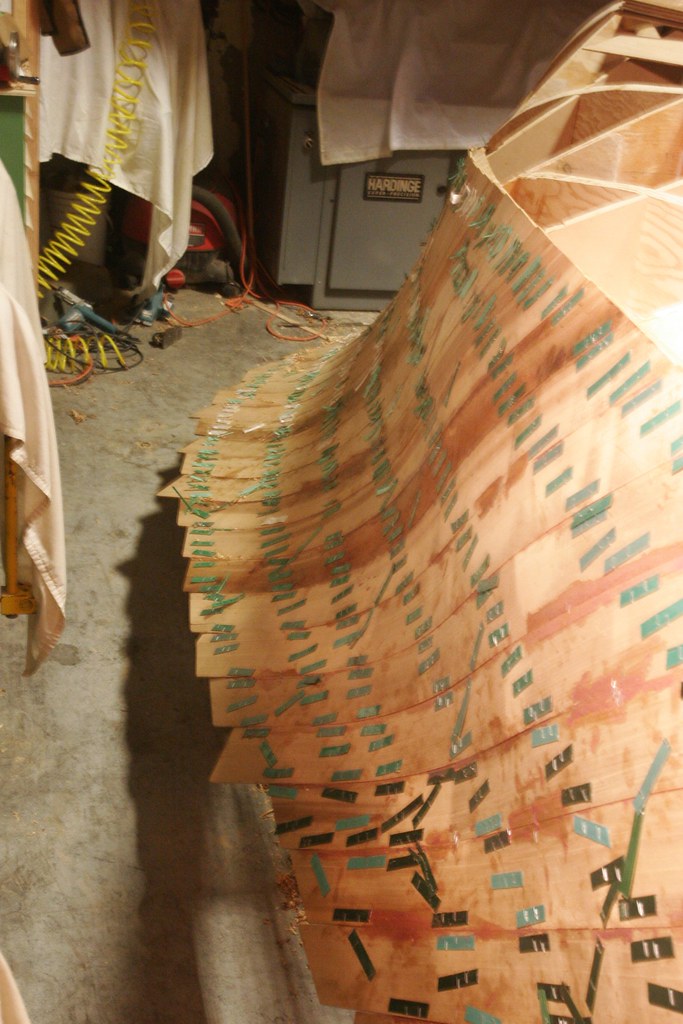After weeks – months, really – of messing about with framing, it’s time to move on. Today we begin planking the hull.
“Planking” is boat-speak for “covering the frame with a wooden skin,” and the process we’re using is called cold molding. Many boats can be built by bending large pieces of plywood into the finished shape of the hull. If you’ve ever heard of a “stitch and glue” boat, that’d be a prime example of such a boat. For this to work, the hull can’t have compound curves because a single piece can only be bent into a conical section. Our boat has looooots of compound curves, and so we can’t just bend a single piece of sheet lumber and call it good. Instead, we take those 4″ wide strips and start laying them in next to each other. To allow them to fit the curve, each one is shaped by hand, shaving away some of the edge so it will fit against the prior plank when it’s bent to the hull. I can’t really photograph this process for you without a third hand, so you’ll have to use your imagination, but suffice it to say that it takes about 2-3 minutes to fit the edges together for each successive plank.
Then you take a bunch more time to apply adhesive and staple the plank in place. The staples are temporary, and are shot through a piece of plastic or nylon that can be used to pull the staple back out after the epoxy has cured.
Each side gets three layers of WRC for a total thickness of about 1/2″. Today, we were able to get the first layer on the starboard side.

This is a lot of work. And each of those staples that goes in with the pull of a trigger is going to take a lot more work to remove. Sigh… These pretty curves create an awful lot of work. Because the curves are pretty tortured in some places we need a lot of force to hold the planks in place while the epoxy cures. I’m thinking it’ll take a couple of hours to remove all those damned staples. We’ll find out tomorrow.
-Ben
